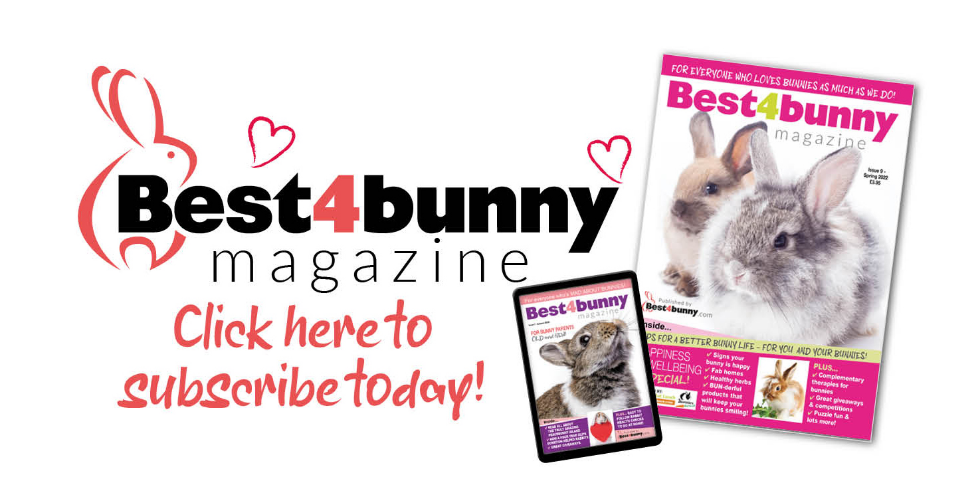
Rabbits, regardless of whether they have indoor or outdoor accommodations, require our assistance to maintain a comfortable and cool temperature, especially during hot and sunny days. Rabbits are sensitive to extreme temperatures and can suffer from heatstroke or hypothermia if exposed to temperatures that are too hot or too cold. According to the Merck Veterinary Manual, pet bunnies prefer temperatures between 50°F (10°C) and 80°F (27°C) for optimal well-being.
As bunny parents, taking proactive measures is crucial to ensure your rabbit’s comfort during warm, sunny days. Rabbits are susceptible to heat stroke, which can be fatal. Additionally, it’s important to emphasise that you should never cool a rabbit down by submerging it in cold water, as this can lead to shock and death.
Without further ado, follow our simple & practical tips to keep your bunny cool & healthy.
• Cool your bunnies’ ears.
Wet a kitchen tissue or paper towel under the cold-water tap. Squeeze out the excess water and gently wipe over their ears and the back of their heads to instantly cool them. Bunnies regulate their body temperature through their ears, so this tip provides a quick cooling effect.
• Use a plant spray bottle.
Fill it with cold water and set it on mist spray. Spray at a distance or from a height over your bunnies, spraying slowly two or three times. Avoid drenching them. Repeat this throughout the day whenever your bunny needs to cool down. Plant spray bottles are also handy for spraying items like cotton pillowcases for them to lie on.
• Make cool flopping spots.
Use Ice bottles, pods + terracotta plant pot saucers, and ceramic tiles.
Have as many plastic bottles of frozen water and ice pods in your freezer as possible. Having more than one will allow you to swap them throughout the day. Pop it back in the freezer as soon as one melts and swap it with another frozen one.
If you don’t have plastic bottles to fill with water and freeze, you can use plastic container tubs like Tupperware containers or lunch boxes.
Place the frozen pods or bottles inside a cotton pillowcase and lay the pillowcase on top of a ceramic tile inside your bunny’s enclosure. This is a great way to keep your bunnies cool, and the bigger the plastic bottle, the longer it will stay frozen. They love lying against it.
You can also place many smaller plastic bottles inside cotton socks and dot them around your bunnies’ enclosure.
Place the terracotta plant pot saucers upside down with an ice block underneath, and your bunny can lie on top of this to keep cool.
Ceramic floor tiles and concrete slabs, placed in a shaded area, are brilliant for rabbits to lie on and keep cool much better on a hot day than lying on a bed of hot hay or straw.
We still provide the hay, but we have a hay-free spot where you can place the slab or floor tiles.
You can also use a self-cooling mat, but make sure you put them in a cotton pillowcases to prevent your bunny from chewing them. Ceramic tiles can be placed in a freezer for a few hours to make them even cooler. Have more than one tile in the freezer to alternate them throughout the day.
Litter trays with soil also provide a cool place for bunnies to lie down. Fill a spare litter tray with soil from your garden or child-friendly sand to create another cool area for your bunny to lie on. You can also use plastic storage containers or plant trays for this.
• Create shade and lots of it.
Never leave a rabbit in direct sunlight for long periods. Bring them indoors if you cannot move them into a shaded area or create a shaded area.
The easiest way to block out direct sunlight is to use light-coloured cotton sheets. They are light in weight, making it easy to peg them up anywhere, and being cotton, they keep nice and cool. They are much easier to use and cheaper than shade sails. Always leave significant gaps at the top and bottom of your bunny’s accommodation for good ventilation. Before hanging it out, soak the sheet in cold water to create an even cooler shaded area.
Patio umbrellas & sun sail shades are great ways to provide instant shade. Another alternative is to create shaded areas behind items like nest boxes or raise nest boxes & hutches so they can lay underneath them in the shade. Please ensure you raise them off the ground safely.
Car screen sunshades are invaluable for creating shade and helping to keep rabbit homes from heating up. Buy more than one, tape them together to make an ample sunscreen, and place them on roofs or over the sides of rabbit enclosures that catch the sun for long periods.
Finally, if your bunnies are indoors and you do not have air conditioning, keep the blinds and curtains closed to keep the sunlight out. This will help keep the temperature down in the house, especially late afternoon, when things really do start to heat up indoors. Always keep an eye on the temperature and make sure your bunnies are comfortable.
• Change their water.
No one likes warm water to drink, and that includes bunnies. Change their water a few times throughout the day, on very warm days, to help encourage them to drink their water. Fresh water is much more appealing to them. It is best to provide a bowl of water to your bunny, as many bunnies prefer to drink from a bowl, and they take in more water from a bowl than from a bottle. They can use the water to clean themselves, which will cool them down. If your bunny is used to drinking from a bottle, do not take that away; provide a bowl. Finally, place ice cubes in the bowls to keep the water cooler longer.
• Using fans
If you can safely use fans to help keep your bunnies cool, that is great, but make sure the fans are positioned where your bunny can move away from them. Next, always keep bunnies from investigating the fans and protect the wires. Place expen (exercise pen) panels around the fans to keep your bunnies away from them, or attach small fans on the walls pointing downwards to help them get the full effect and keep the wires safely out of reach.
For an air conditioning effect, you can place bottles of frozen water in front of the fans or a damp towel over a chair and put it in front of your rabbit’s enclosure. Place a fan behind it. The fan blows out the moisture from the damp towel and acts as air conditioning.
What about bringing outdoor bunnies inside?
To bring outdoor bunnies inside to a cool house may seem like the obvious thing to do on a hot day, but lots of bunnies can get very stressed out by being placed in a strange environment and the stress can cause them more harm than good. If you bring your bunnies into a new environment, you need to observe them closely and ensure they settle. Sometimes, it is better to keep bunnies in their environment, where they will relax a lot more. Apply as many of these tips as you can to help keep them cool.
• Keep roofed areas cool.
If your bunny’s roofed area of their enclosure is exposed to the sun at any point during the day, keeping the roof nice and cool is essential. You can use heat reflective car shades (buy more than one and tape them together to cover large areas). Large patio umbrellas are great for keeping the roof in the shade. Or place a bed sheet or a large blanket on the roof (secure with metal clamps) and soak with water using a watering can or a hose pipe. Keep wetting it during the day to prevent the roof from getting hot.
• Give your bunnies lots of space.
Ensure your rabbit has lots of space to move around and different areas within its home to keep cool. Never keep rabbits confined to a small cage or hutch. Not only is it cruel (rabbits need space to live a happy, healthy life), but rabbits can die on hot days if they are stuck in a small cage/hutch.
• Keep them calm.
Bunnies naturally nap often during the day, but on hot, sunny days, they will likely be completely zonked out until late evening. It is best to leave them alone as much as possible to avoid stressing them out but keep a close eye on them to check they are okay.
• Feed them a cool treat.
On warm days, we provide our bunnies with a few snacks throughout the day, such as fresh vegetables or a small piece of fruit. This gives them a refreshing treat and helps us monitor their well-being. If they’re eating, we can be confident that they’re doing well.
• Get up early.
Even on a hot day, your bunnies must exercise and burn off energy. However, exercising in hot weather is not recommended. The best time for exercise is very early in the morning, when the temperature is cooler. So, make an effort to get up early and let your bunny have their exercise time before the temperature rises too much. Even a half-hour of exercise will make them happy and content.
We hope you find all these tips helpful. They are quick and easy, but the key is to prepare when you know hot weather is coming. The other key is to be vigilant of your bunnies in hot weather. Keep a close eye on them; if you are concerned about anything, always contact your vet for advice.
Written by bun mom, Jess Sullivan


